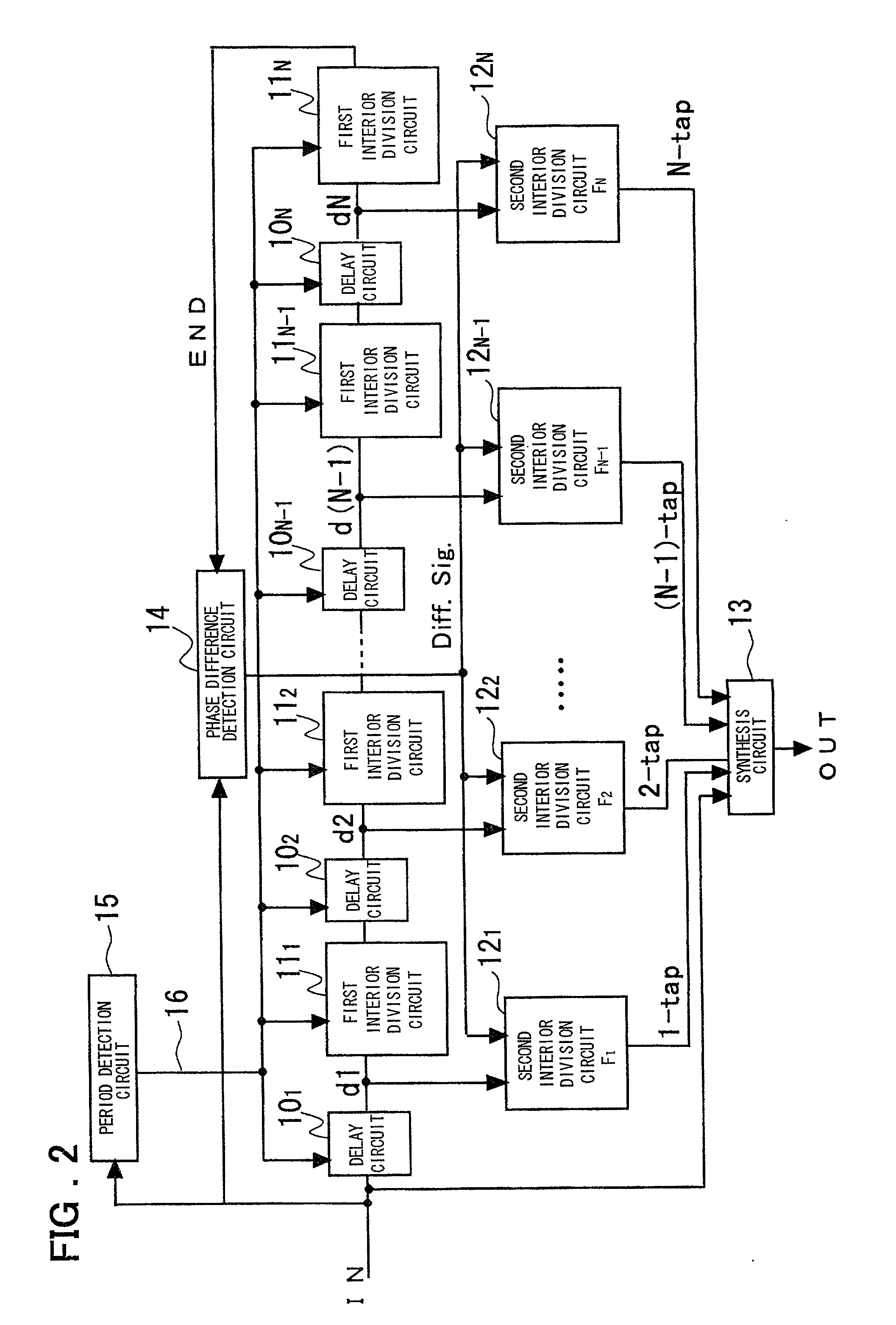Clock controlling method and clock control circuit
a control circuit and clock technology, applied in the direction of generating/distributing signals, pulse techniques, instruments, etc., can solve the problems of difficult to generate multiplexed signals phase-synchronized with the external clock received, time-consuming lock process, and difficult to output a signal synchronization
- Summary
- Abstract
- Description
- Claims
- Application Information
AI Technical Summary
Benefits of technology
Problems solved by technology
Method used
Image
Examples
first embodiment
[0139] FIG. 5 shows an illustrative structure of the first interior division circuit 11 in the present invention. In FIG. 5, the first interior division circuit 11 is basically comprised of a timing difference division circuit shown in FIG. 14, and is made up of a p-channel MOS transistor MP01 which is connected across a power supply VDD and an internal node N1, a logical OR circuit OR1 which receives signals from two input terminals IN1, IN2 and has its output terminal connected to the gate of the p-channel MOS transistor MP01 to be adapted to turn on the p-channel MOS transistor MP01 when the input signals fed to the two input terminals IN1 and IN2 in common are low, an inverter INV03 which has its input terminal connected to the internal node N1, m pieces of n-channel MOS transistors which are connected across the internal node N1 and the ground and have the gates fed in common with the input signal supplied to the input terminal IN1, and N-m pieces of n-channel MOS transistors w...
second embodiment
[0177] The second interior division circuit 12 is configured similarly to the second interior division circuit 12 of the above described second embodiment which is explained with a reference to FIGS. 6 and 9. However, the setting of the magnitude relation between the delay time in the number 1 to number N second interior division circuits 12.sub.1 to 12.sub.N differs from that of the previous embodiment. That is, in the present embodiment, the delay time is increased by steps of T / N sequentially in the order of the number 1 second interior division circuit 12.sub.1 to the number N second interior division circuit 12.sub.N, with the number N second interior division circuit 12.sub.N having the maximum delay time.
[0178] Referring to FIG. 6, the number n second interior division circuit 12.sub.n includes a first second switch (p-channel MOS transistor MP1) for controlling on and off of a charging path to the capacitor C provided in the circuit, a plural number of second switches (n-cha...
fifth embodiment
[0266] A further embodiment of the present invention is explained. FIG. 20 shows the structure of this modified embodiment suitable for high-speed clock transmission. While in the embodiment shown in FIG. 17, an unbalanced clock transmission system is adopted, the present fifth embodiment of the present invention, shown in FIG. 20, a balanced clock transmission path is adopted and there are provided 2N delay circuits 10.sub.1 to 10.sub.2N and 2N delay circuits 10.sub.B1 to 10.sub.BN for each of the clock CLK and complementary clock having a reversed in phase (out of phase by 180.degree. (.pi.)) with respect to the clock CLK, and interior division circuits 12.sub.0 to 12.sub.N and 12.sub.B0 to 12.sub.BN, for the respective clocks. The interior division circuits 12.sub.0 to 12.sub.N and 12.sub.B0 to 12.sub.BN generate multi-phase clocks corresponding to 2N equal division of the clock period tCK. The delay circuits 10.sub.1 to 10.sub.2N and the delay circuits 10.sub.B1 to 10.sub.B2N ma...
PUM
 Login to View More
Login to View More Abstract
Description
Claims
Application Information
 Login to View More
Login to View More - R&D
- Intellectual Property
- Life Sciences
- Materials
- Tech Scout
- Unparalleled Data Quality
- Higher Quality Content
- 60% Fewer Hallucinations
Browse by: Latest US Patents, China's latest patents, Technical Efficacy Thesaurus, Application Domain, Technology Topic, Popular Technical Reports.
© 2025 PatSnap. All rights reserved.Legal|Privacy policy|Modern Slavery Act Transparency Statement|Sitemap|About US| Contact US: help@patsnap.com



